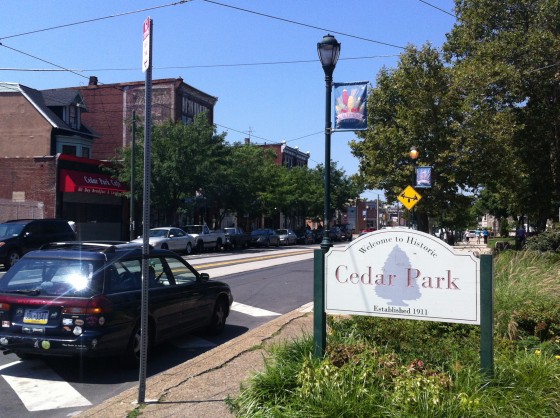One of the things Cedar Park Neighbors (CPN) Director of Development Impact David Hirchner realized after the group’s 2010 discussion about the Baltimore Avenue commercial corridor was the group would benefit from a set of guiding principles to further steer development in that area.
When the Phila2035 meetings to collect community input and asses various commercial and zoning launched last year, it was the perfect opportunity for CPN to supplement the larger City-run effort (the University City/Southwest Plan has since been adopted) with their own local flavor.
We wrote about the CPN survey last summer when members were collecting community input. The results were published last month. CPN received about 500 responses, in the form of 450 online and the rest through handwritten copies that were mailed out with CPN’s yearly newsletter, which is mailed out to all households from Cedar to Kingsessing, between 46th & 52nd.
“We all recognize the neighborhood is undergoing maybe not fast, but gradual change,” said Hirchner. “As part of that we want to be thinking proactively.”
He’s talking about thinking about what types of commercial and residential development they want to see in their community so when issues arise CPN knows how to react. The survey results include the typical desires to see less crime and more green space. Other wants include locally owned businesses and developers who maintain a relationship with the local civic group. People want businesses and builders with a vested interest in the community doing the work in their neighborhood, and businesses that embrace the neighborhood’s sexual, cultural and religious diversity.
“Not just development for development’s sake,” Hirchner said.
The survey did detect a discord in whether residents preferred owner-occupied or rental housing. Six out of ten thought an increase in rentals was important, compared to the 37% who think owner-occupied homes are the way to go in Cedar Park. As of 2010, the area consisted of 60% renters, according to the study. In the past 10 years, the median home value of homes north of Baltimore between 46th and 50th has risen 242%, according to the study.
Cedar Park represents an interesting glimpse at the evolving dynamics of a neighborhood from a place for artists to a place for families. Moving forward, CPN will work to continue to strengthen the Baltimore Avenue corridor, which has been filling in new businesses with the regularity of the seasons. As such, the guiding principles put forward in this recent study will serve to shape that development in a way respectful of the current architecture and neighborhood culture. Renters be alert, prices are jumping like beans out there, and CPN prefers owner-occupied homes for its future- though it does seem open to a mix.
–Lou Mancinelli


